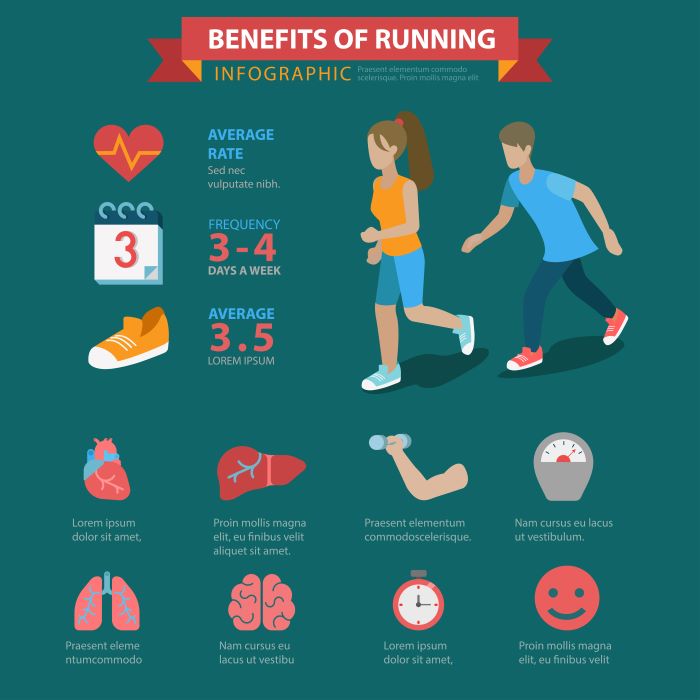When embarking on a running journey, it’s crucial to understand that fitness levels can vary significantly from person to person. Factors such as age, previous physical activity, and overall health play a vital role in shaping your individual fitness baseline. To gauge how fit you currently are, you might consider the following:
- Current Activity Level: Assess how often you engage in physical activities outside of running. This includes strength training, sports, or even daily chores.
- Body Composition: Your body fat percentage and muscle mass can influence your running performance. A balanced diet and regular exercise can help improve these metrics.
- Cardiovascular Endurance: This is a key component of running fitness. Simple tests like the 1-mile walk test or the Cooper test can help you assess your current endurance level.
Understanding these components is essential for setting realistic and achievable goals as you embark on your running journey. By identifying your starting point, you can formulate an effective training plan that aligns with your fitness objectives. Remember, the goal is not just to run but to run effectively and enjoyably.
Visit our website to learn more and get started today! Click here.
Factors Influencing Your Running Fitness Timeline

Several factors significantly influence how long it takes to get fit for running. Understanding these elements can help you tailor your training and set realistic expectations. Here are some key factors to consider:
- Training Frequency: The more consistently you train, the quicker you will see improvements. Aim for at least 3-4 runs per week to build endurance and strength.
- Running Experience: If you’re a beginner, your body will take time to adapt to the new demands of running. Conversely, seasoned runners may experience quicker gains as they return to form.
- Age: Typically, younger individuals may recover faster and adapt more quickly to training. However, older runners can also achieve remarkable fitness levels with the right approach.
- Nutrition: A well-balanced diet rich in carbohydrates, proteins, and healthy fats fuels your training sessions and aids recovery. Proper hydration also plays a critical role in performance.
- Rest and Recovery: Allowing your body adequate time to recover between runs is essential for preventing injuries and promoting muscle repair. Incorporate rest days and consider cross-training activities.
By recognizing these factors, you can better navigate your fitness timeline and make informed decisions about your running program. Be patient with yourself and remember that everyone’s journey is unique.
Creating a Tailored Running Workout Plan
Creating a tailored running workout plan is essential for achieving your fitness goals efficiently. A customized plan considers your current fitness level, running experience, and specific objectives, ensuring that each session contributes to your overall development. Here are some steps to help you design a plan that works for you:
- Assess Your Current Fitness Level: Before you start, evaluate your baseline fitness. Consider how far you can run, your pace, and any previous injuries. This assessment will guide your progress.
- Set Clear Goals: Determine what you want to achieve. Whether it’s completing a 5K, improving your speed, or simply enjoying the process, having clear goals will keep you motivated.
- Incorporate Variety: A well-rounded plan should include a mix of different workouts. Consider integrating:
- Long Runs: To build endurance.
- Speed Work: Such as intervals or tempo runs to improve pace.
- Recovery Runs: To allow your body to adapt without added stress.
- Listen to Your Body: It’s crucial to pay attention to how your body responds to training. If you feel fatigued or notice any signs of injury, adjust your plan accordingly.
- Track Your Progress: Keeping a running log can help you monitor your improvements over time. Note your distances, times, and how you felt during each run.
By following these steps, you can create a running workout plan that is not only effective but also enjoyable, setting you on the right path towards achieving your fitness goals.
The Importance of Consistency in Training

The journey to becoming fit for running is largely defined by consistency. While it may be tempting to push hard during initial workouts or to take long breaks when motivation wanes, maintaining a steady training routine is critical for long-term success. Here are several reasons why consistency is vital:
- Builds Endurance: Regular training helps to gradually increase your stamina. The body adapts to the stress of running over time, enhancing your cardiovascular fitness and muscular endurance.
- Establishes a Routine: Consistent training creates a habit. When running becomes part of your daily or weekly routine, it becomes easier to maintain motivation and make it a priority.
- Prevents Injury: By training consistently at an appropriate level, you allow your muscles, ligaments, and tendons to adapt. Sudden jumps in intensity or volume can lead to injury, whereas gradual increases foster resilience.
- Enhances Performance: Regular practice allows for skill refinement. Whether you’re working on your form, speed, or pacing, consistent training leads to measurable improvements.
- Boosts Mental Toughness: Sticking to a training plan, even on tough days, builds mental fortitude. Overcoming obstacles such as fatigue or inclement weather fosters a mindset geared towards resilience.
To reap the benefits of consistent training, aim to set a schedule that balances intensity and recovery. This approach ensures that you remain engaged in your running journey while making steady progress towards your goals.
Tracking Progress and Adjusting Goals

As you embark on your journey to get fit for running, tracking your progress is essential for maintaining motivation and adjusting your goals. Monitoring your improvements allows you to see how far you’ve come and helps you identify areas that need further focus. Here are some effective strategies for tracking your progress:
- Keep a Running Log: Documenting your runs, including distance, time, and perceived effort, can provide valuable insights. This log serves as a historical record that helps you recognize patterns, notice improvements, and celebrate milestones.
- Use Technology: Consider utilizing apps or wearable devices that track your runs. These tools can offer real-time feedback, such as pace, heart rate, and calories burned, making it easier to analyze your performance.
- Set SMART Goals: Your goals should be Specific, Measurable, Achievable, Relevant, and Time-bound. Regularly reassess these goals based on your progress. For instance, if you’ve consistently achieved a certain distance, it may be time to set a new target.
- Listen to Your Body: Pay attention to how your body responds to your training. Adjust your goals based on your physical feedback. If you’re feeling fatigued or experiencing discomfort, it may be necessary to modify your approach.
- Celebrate Milestones: Acknowledge your achievements, whether they are small or large. Celebrating progress fosters a positive mindset and keeps you motivated for future challenges.
By consistently tracking your progress and adjusting your goals, you can create a dynamic training plan tailored to your evolving fitness level. This proactive approach ensures that you remain engaged and motivated on your journey to becoming a fitter runner.
Joining a Running Community for Motivation

One of the most rewarding aspects of your running journey is the opportunity to join a vibrant running community. Becoming part of a community can significantly enhance your motivation and accountability. Here’s why engaging with fellow runners can elevate your running experience:
- Shared Experiences: Connecting with other runners allows you to share experiences, tips, and challenges. You’ll find that many others face similar struggles, and this camaraderie can make your journey feel less isolating.
- Regular Group Runs: Participating in organized group runs provides structure and consistency to your training. Running with others can push you to go further and faster than you might on your own, making your workouts more enjoyable.
- Accountability: Being part of a community helps keep you accountable. When you know others are counting on you to show up for group runs or events, you’re less likely to skip workouts, enhancing your commitment to your fitness goals.
- Access to Resources: Many running communities offer access to resources such as training plans, coaching tips, and workshops. This wealth of information can help you improve your technique and overall performance.
- Social Connections: Beyond fitness, running communities foster friendships that can lead to social activities outside of running. These connections often result in lasting relationships that enrich your life.
Whether it’s joining a local running club, participating in online forums, or attending community events, finding a supportive group can make all the difference in your running journey. Visit our website to learn more and get started today! Click here.


